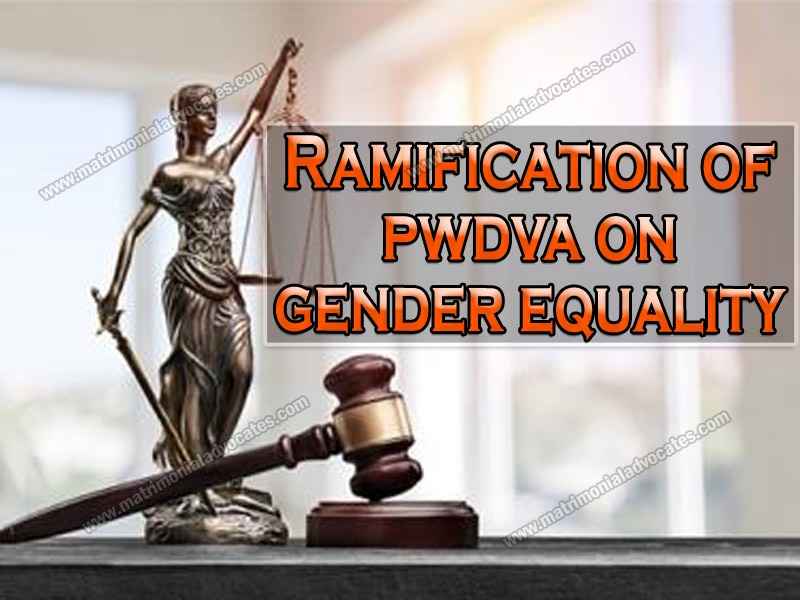
“Gender inequality affects every aspect of culture and society. Its affect is most prominent in the family structure, the education system and the economy. Just like social class systems, gender is a structural feature of society”
The relationship between gender and violence is complex. The different roles and behaviours of females and males, children as well as adults, are shaped and reinforced by gender norms within society. These are social expectations that define appropriate behaviour for women and men e.g. Women are generally associated within family and home and men are to take risks and handle things outside home. Differences in gender roles and behaviours often create inequalities, whereby one gender becomes empowered to the disadvantage of the other. Thus, in many societies, women are viewed as subordinate to men and have a lower social status, allowing men control over, and greater decision-making power than, women. Gender inequalities have a large and wide-ranging impact on society for example, opportunities for employment and promotion, levels of income and representation and education. Often inequalities in gender increase the risk of acts of violence by one gender to another.
Mostly violence we have encountered or heard in our society are the violence against women. Violence against women is most often perpetrated by an intimate partner, but it takes many other forms: violence by a family member, sexual harassment and abuse by authority figures, trafficking for prostitution, child marriages, dowry-related violence, honour killings, and sexual violence committed by soldiers during wars and so on. The kind of violence we are going discuss in this article is domestic violence synchronous with gender equality. Before that let’s try and assimilate the erudite meaning of gender equality and domestic violence.
GENDER EQUALITY:
Equal treatment of women and men in laws and policies; and equal access to resources and services within families, communities and society at large.
Sociologically, the word gender refers to the socio-cultural definition of men and women, the way societies distinguish men and women and assign them social roles. The distinction between sex and gender was introduced to deal with the general tendency to attribute women’s subordination to their anatomy. For ages it was believed that different characteristics, roles and status accorded to women and men in society which are determined by sex, that are natural and therefore, non changeable.
Gender inequality is a form of inequality which is different from other forms of economic and social inequalities; it is a gender difference which is created by the society. This kind of difference dwells not only outside the household but also centrally within it. Gender inequality has adverse impact on the overall well being of society because discrimination against any gender in regard of social, political or economic growth will initiate chaos within the society and between what’s right or wrong.
DOMESTIC VIOLENCE:
“The effects of abuse are devastating and far reaching. Domestic violence speaks many languages, has many colours and live in many different communities.”
Domestic violence can be described as the power misused by one adult in a relationship to control another. It is the establishment of control and fear in a relationship through violence and other forms of abuse. This violence can take the form of physical assault, psychological abuse, social abuse, financial abuse, or sexual assault. The frequency of the violence can be on and off, occasional or chronic. In simple terms it is a pattern of coercive control that one person exercises over another.
Domestic violence is a burden on numerous sectors of the social system and quietly, yet dramatically, affects the development of a nation. Domestic violence is a global issue reaching across national boundaries as well as socio-economic, cultural, racial and class distinctions. This problem is not only widely dispersed geographically, but its incidence is also extensive, making it a typical and accepted behavior. Domestic violence is wide spread, deeply ingrained and has serious impacts on women’s health and well-being. Its continued existence is morally indefensible. Its cost to individuals, to health systems and to society is enormous. These costs do not only affect the present generation; what begins as an assault by one person on another reverberates through the family and the community into the future.
Ape per the World Health Organization reports the proportion of women who had ever experienced physical or sexual violence or both by an intimate partner ranged from 15% to 71%, with the majority between 29% and 62%. From ages women are considered weak, vulnerable and in position to be exploited and domestic violence is one of the old phenomena to exploit women and through them their families. Cultural mores, religious practices, economic and political conditions may set the precedence for initiating and perpetuating domestic violence, but ultimately committing an act of violence is a choice that the individual makes out of a range of options. Women faced discrimination right form childhood and domestic violence in a sacred conjugal relationship.
Government stressed with the rapid wide spread of domestic violence against women that they commenced act against such domestic violence and for the protection of women. On 26.10.2006, the central government notified the Protection of women from domestic violence act, 2005 in the official gazette.
THE PROTECTION OF WOMEN FROM DOMESTIC VIOLENCE ACT (PWDVA):
The PWDVA aims at providing protection to women from domestic violence faced by the women in their matrimonial house. A law which criminalizes abuse of a woman by her spouse or other males within the household. The sections 18-23, provide large number of boulevard for an abused women to get relief. PWDVA is milestone for the protection of women from domestic violence which further provides more effective protection of rights of women guaranteed under the Constitution who are victims of violence of any kind of occurring within the family. The PWDVA is a special legislation and restrictive provision for errant family members for prohibiting harassment or any violence against women.
This act further covers the women who are or have been in a relationship at a point and both parties have lived together in shared household and are related to consanguinity, marriage, or through a relationship in the nature of marriage or adoption. In addition, the relationship with the family members, single women, or living with the abuse are entitled to legal protection. This act has been enacted keeping in view the rights guaranteed under Article 14, 15 and 21 of the Constitution of India.
PWDVA is act for any women who have been subjected to domestic violence the definition clause of the act defines the word aggrieved person as “any woman who is or has been, in a domestic relationship with the respondent (husband) and who alleges to have been subjected to any act of domestic violence by the respondent”. It will be right to say that this act is specifically for the protection of women in domestic relationship but what about the other person.
IMPACT OF PWDVA ON GENDER EQUALITY:
As we leaned above that from ages women was subject to discrimination, cruelty and violence they are the second class citizenry. For many decades women are in back seat far from the men. The convention and elimination of all forms of discrimination against women was the main foundation of rights and respect of women to which 166 countries including India are members. The convention inter alia recognized the discrimination against women in many sectors which was directly or indirectly hampering economic growth and detrimentally hampering the society at large. With the help of the conventions today women has stepped out of their small conservative shell created by society into the new evolving world which welcomes them with open arms. Now, women hold the stronger stand and equal status in the society, they have come out to be more hard working, talented and sincere in regard to all sectors.
In the present time when women are educated, employed and independent, where there is no need of dependency on men and they can live their life on their terms, in such times we have heard numerous cases of domestic violence. Now, women are able to come forward in respect to any type of domestic violence they have suffered, this is a triumphant for law. The main purpose of PWDVA was to provide protection; secure rights of women and eliminate all forms of discrimination against women in which law has succeeded but how many of these cases are actually genuine. It comes as a shock for people and judges when they learn PWDVA a law enacted for protection of women/victims is now simply being used by the women to harass and exploit their in-laws.
Domestic violence is always discussed in relation to women. Man is always considered as the perpetrator. However, because of the socioeconomic changes affecting the family structure in recent times, domestic violence is not limited to women only. Men also are abused verbally, physically, emotionally, psychologically, and sexually. Men do not report these abusive behaviors and are silent victims of the consequences. As the laws in our society favor women as victims of violence, these hapless men do not get justice for their pitiable condition in the family and society.
According to a recent study, 51.5% males experienced violence at the hands of their wives/intimate partner at least once in their lifetime and 10.5% in the last 12 months. According to the National Family Health Survey, 2004, has found that about 1.8% or an estimated 60 lakh women have perpetrated physical violence against husbands without any provocation. However, men are more likely to be threatened and attacked by male relatives of the wife than the wife herself. The strange aspect however is, men are not asked if they are victims of domestic violence in these surveys.
In another study conducted by My Nation along with Save Family Foundation (Delhi) on domestic violence against men, between April 2005 and March 2006, 1,650 men were interviewed and their personal cases looked into. The study concluded that Indian women were the most abusive and dominating.
The survey conducted by National Family Health Survey which throws light on unprovoked violence against men by women is evidence in the face. Notwithstanding the fact that double the numbers of men commit suicide compared to women, it should not be a surprise to ask for a law to protect men as such a law for women already exists. In fact, it would be preposterous in this age of gender equality, not to have such a law. Such a law to protect men from domestic violence would act as succor to millions of those men who feel victimized and left out.
All these studies indicate that gender neutral laws are a necessity in our country, looking towards an era where women were weak and helpless is a bygone now, women are capable, smart and independent, and the shells they came out from are erstwhile. This privilege, power given to women by legislation has had a detrimental impact on gender neutrality. To protect women government enacted several laws for their empowerment, granted special reservation, amended other laws but government ended up giving too much protection and power under these privileged laws. There is a need for gender neutral laws for domestic violence. Domestic violence should be considered as spousal violence.
REDRESSAL FOR MEN:
Women are not the ones who faced domestic abuse from the hand of their spouse but it’s vice versa. Men don’t appear to be weak or fragile in our society they are always strong like a mountain so nothing can hurt them, a myth. Men and women are different sexually but before that they both are humans made of flesh and bone and both genders are tend to hurt physically, emotionally and mentally. Domestic violence and other crimes which as per our Indian law and thinking can be committed only against women are committed against men as well. After a long period crime against men’s has been recognized by our Judiciary and Government. In one of the Supreme Court ruling, the judges found that low conviction rates indicated that most complaints were frivolous. India’s men’s rights movement has also been using these crime statistics and judicial rulings to assert that the law is an “extortion racket.”
We have heard from a retired Delhi high court judge who says the law is often “used as a leverage to settle scores”; a former Indian law minister who admits to the failure of governments to deal with the “abuse of this law”; one women’s rights activist who believes the law must be amended; while a second insists that “cases of misuse are few” and the law must remain unchanged to protect women from dowry abuse.
In Arnesh Kumar vs. State of Bihar judgment which curtailed the abuse of power of arrest by police in IPC 498A (and many other crimes) cases. This judgment is in line with creating a more settlement oriented culture, where husbands will be encouraged to pay up and get rid of 498A/406 type of cases, and the carrot being given to accused men and their families are: lesser fear of arrests, facing a civil committee rather than dealing with CAW cells, and lesser pain during trials.
In another judgment of Narendra vs. K. Meena wherein the Supreme Court has held that if the wife forces and exerts pressure on the husband to live separate from his old aged parents or from the joint family without any reasonable excuse/ground, the same would amount to cruelty.
In the judgment of Tahir Ali vs. Shagufta it was held by Uttrakhand High Court, if wife has sufficient means to maintain herself, she has no right to get any maintenance from her husband.
Slowly and steadily Indina Judiciary are passing some very good judgments in regard of protecting the interest of men in varieties of cases. A new bill drafted by Advocates Ashima Mandla and Faraz Khan proposed modifying rape laws to make them gender neutral.
Looking at some of the judgments of or guidelines laid down by the Supreme Court we can firmly believe that these are the first small steps in direction of protection of men and making laws gender neutral. This few judgments has given faith and some assured the other gender that they will not be harassed and exploited under the laws providing protection to women.
CONCLUSION:
The development of international and national legal frameworks that promote gender equality can play an important role in making laws gender neutral. A phrase that excess of everything is bad this fits right into the definition of powers and protection given to women these days. Though it would be wrong to say that these laws didn’t brought some really good and secure changes in the society for safety purpose of women but our Indian Judiciary and Government in path of providing protection to women forgot to maintain balance between the both the genders. In ancient era when men was given priority and utmost importance it established a patriarchal society where men got the power to dominate women, likewise now women are given too much protection and priority that they started to dominate the other gender.
The society we are living I in is a patriarchal society where men feel that it is shameful to be beaten by a woman and they do not report the violence. The pressure from family also prevents them from taking any legal action, and they are also afraid of getting trapped in false accusation under 498A. When men report domestic abuse and violence, people do not believe them. All laws for controlling domestic violence consider women as victims. Antidowry laws Dowry Prohibition Act, 1961, and later Section 498A passed by the Supreme Court of India already show the concern and asked to stop the “Legal Terrorism” in the form of misuse of 498A and the necessary changes to be made by the Parliament.
The family structure and society are changing, and the same is true with the norms and values regarding gender violence. Men also are physically and mentally harassed by their spouses and in-laws. Hence, their problems must be recognized as a social and public health issue, and appropriate strategies and interventions should be implemented. While, framing new laws one should always keep a deep consideration of its impact on society and both men and women because it will directly or indirectly have adverse or beneficial impact on society.
There is no doubt about the fact that development of women has always been the central focus of planning since independence but let’s not forget that focusing on one gender will eventually give rise to new crime against the other gender. So, let’s have clear vision to remove the obstacles to the path of gender neutral both from government and judiciary.





